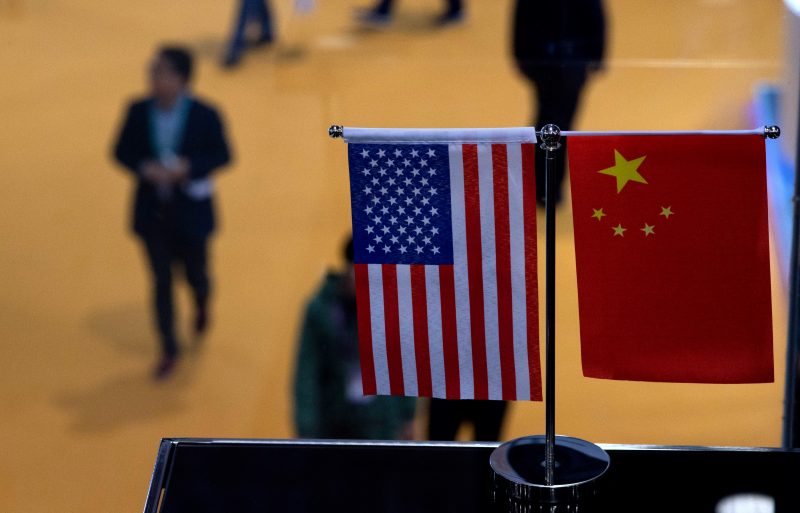More than a year of US-China trade tensions
The US-China standoff over trade started over a year ago (JOHANNES EISELE)
Paris (AFP) – The United States and China have been locked for more than a year in a tit-for-tat trade dispute after President Donald Trump announced hefty taxes on steel and aluminium imports.
With negotiations due to resume in Washington Thursday, here is a recap.
– Tax on steel, aluminium –
On March 8, 2018 Trump announces tariffs of 25 percent on steel imports and 10 percent on aluminium in a bid to slash the US trade deficit.
China, the world’s biggest producer of the two products, supplies two percent of US steel imports and nearly 10 percent of its aluminium.
– No exemption for China –
On the eve of the application of the tariffs, Trump suspends them on March 22 for several countries but not China.
Beijing responds with a list of 128 US products, including pork and fruit, on which it says it will impose customs duties of 15-25 percent if negotiations with Washington fail.
On April 3 Washington issues a list of $50 billion in Chinese imports set to be targeted by US tariffs — including as electronics, aircraft parts and medicine — as a response to alleged theft of US intellectual property.
Beijing riposts with plans to hit imports of the same value, including soya, cars and aircraft.
– Signs of appeasement –
On May 19 the countries announce a draft deal under which Beijing agrees to reduce its trade surplus “significantly”.
It says it will reduce from July customs duties on imports of cars, clothing, household goods, cosmetics and fish.
On June 6 Beijing offers to buy nearly $70 billion of extra US goods if Washington drops its threat of tariffs on $50 billion of Chinese goods.
– Trade war –
The United States nonetheless goes ahead and implements on July 6 duties of 25 percent on about $34 billion in Chinese machinery, electronics and high-tech equipment.
Beijing in turn imposes tariffs of equal size and scope, including on farm produce, cars and marine products.
It complains to the World Trade Organization (WTO) about the “largest trade war” in economic history.
On July 16 Washington goes to the WTO over the Chinese measures.
– Escalation –
On August 23 the United States imposes tariffs on another $16 billion of Chinese goods.
China applies 25 percent tariffs on $16 billion of US goods, including Harley-Davidson motorcycles, bourbon and orange juice.
On September 24 Washington slaps 10 percent taxes on $200 billion of Chinese imports. Beijing puts customs duties on $60 billion of US goods.
– Truce –
On December 1 Trump and China leader Xi Jinping agree a ceasefire to the trade war. Washington suspends for three months a tariff increase from 10 to 25 percent due to begin January 1 on $200 billion of Chinese goods.
China agrees to purchase a “very substantial” amount of US products.
Relations tense again with the arrest on December 1 in Canada, at the US’s request, of a top executive at Chinese telecom giant Huawei, Meng Wanzhoum, accused of violating US sanctions on Iran.
But on December 14 China says it will suspend extra tariffs added to US-made cars and auto parts for three months starting on January 1.
On December 28 it allows imports of American rice.
In January and February 2019 Beijing and Washington hold several rounds of trade negotiations.
On February 25 Trump puts off a customs duties hike planned for March 1, citing “progress”.
– US ups pressure –
On May 5, days before the new trade talks open, Trump announces that tariffs on $200 billion in Chinese merchandise will be more than doubled to 25 percent.
The US accuses China of backtracking on commitments in trade talks, which Beijing rejects, warning it will not capitulate to pressure ahead of negotiations starting Thursday.
Disclaimer: Validity of the above story is for 7 Days from original date of publishing. Source: AFP.


